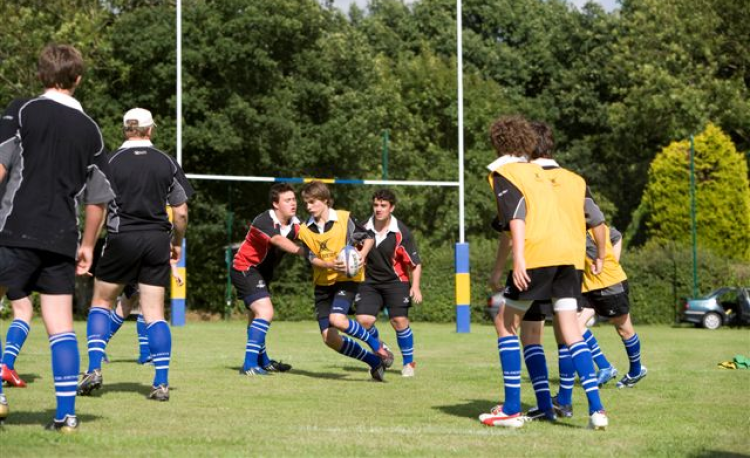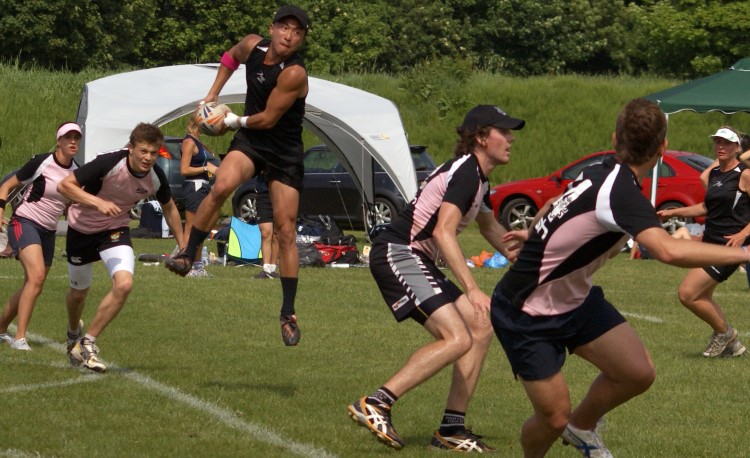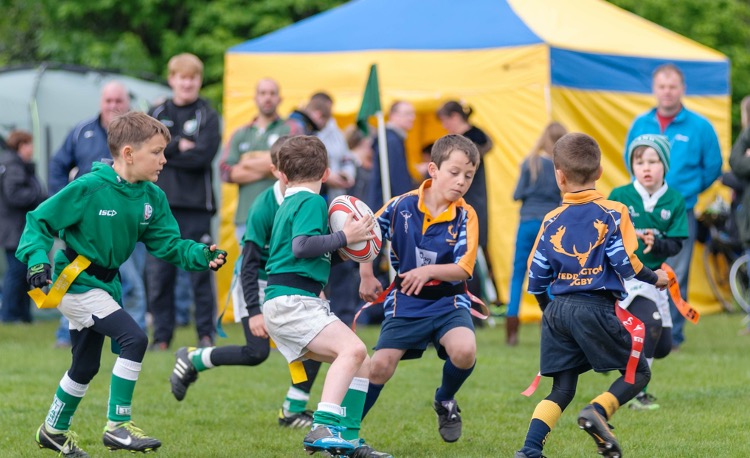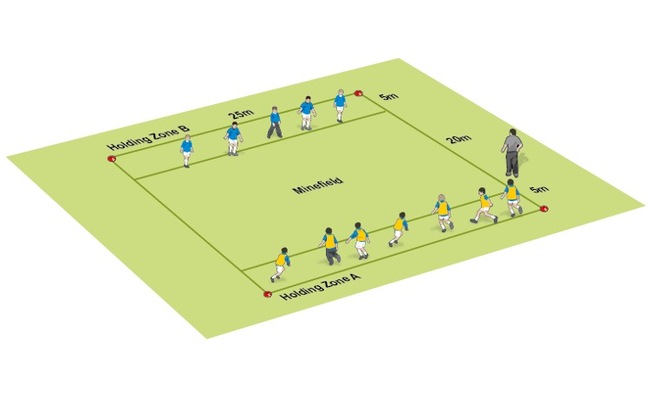Coach a compressed sevens attack
This rugby tactic fits into a system of attack where your players look to use the ball in the following three ways
- Give the fast man space to run around the defender.
- Any 3 v 3 situation should be seen as a chance to beat the defence.
- Otherwise, pull the defence to one side and attack quickly the other way, normally from a breakdown or lineout.

Advantages of using a compressed attack
There is a principle in sevens that a good way to create gaps is to spread the attackers out, from touch line to touch line. Against a team that is defending with six players in their front line and a sweeper, then gaps will appear.
However, there are two good reasons to squeeze closer together:
- A winger would prefer to beat his man with space on the outside, especially if he thinks he is faster than his opposite man.
- Shorter passes are quicker passes, and most players will prefer to pass shorter, especially off their weaker hands.
Therefore, from lineouts and rucks, the principle of alignment is to squeeze up a little more and give the winger the chance to run wide. And when I say run, I mean run. Head down, arc out and go for it!
Pull the defence
Where the defence is more organised, the objective of the attack is to pull the defence to one side of the pitch and pass the ball quickly back the other way.
With the winger standing further infield than normal, as soon as he receives the ball, he pins his ears back and heads out to beat his opposite man.

Key rugby coaching points for the attacking players
1. After passing the ball, each player must move in and behind the person they are passing to. Sometimes known as the "post" or "pocket" position.
2. If and when the winger finds he cannot beat his opposite man, he then must STOP. Amazingly, but only momentarily, the defender will stop also. The winger can then pass the ball back into the post position and the ball is moved away very quickly.
The defence should have been moved around enough for spaces to open up, either close to the ball, in the middle or further out.
3. All these passes must be to the next man, with no miss passes.
Click the link to order a copy of Colin Hillman's Expert Guide to Sevens.
Click the link for the best sevens attack.
Newsletter Sign Up
Coaches Testimonials

Gerald Kearney, Downtown Las Vegas Soccer Club

Paul Butler, Florida, USA

Rick Shields, Springboro, USA

Tony Green, Pierrefonds Titans, Quebec, Canada
Subscribe Today
Be a more effective, more successful rugby coach
In a recent survey 89% of subscribers said Rugby Coach Weekly makes them more confident, 91% said Rugby Coach Weekly makes them a more effective coach and 93% said Rugby Coach Weekly makes them more inspired.
Get Weekly Inspiration
All the latest techniques and approaches
Rugby Coach Weekly offers proven and easy to use rugby drills, coaching sessions, practice plans, small-sided games, warm-ups, training tips and advice.
We've been at the cutting edge of rugby coaching since we launched in 2005, creating resources for the grassroots youth coach, following best practice from around the world and insights from the professional game.













